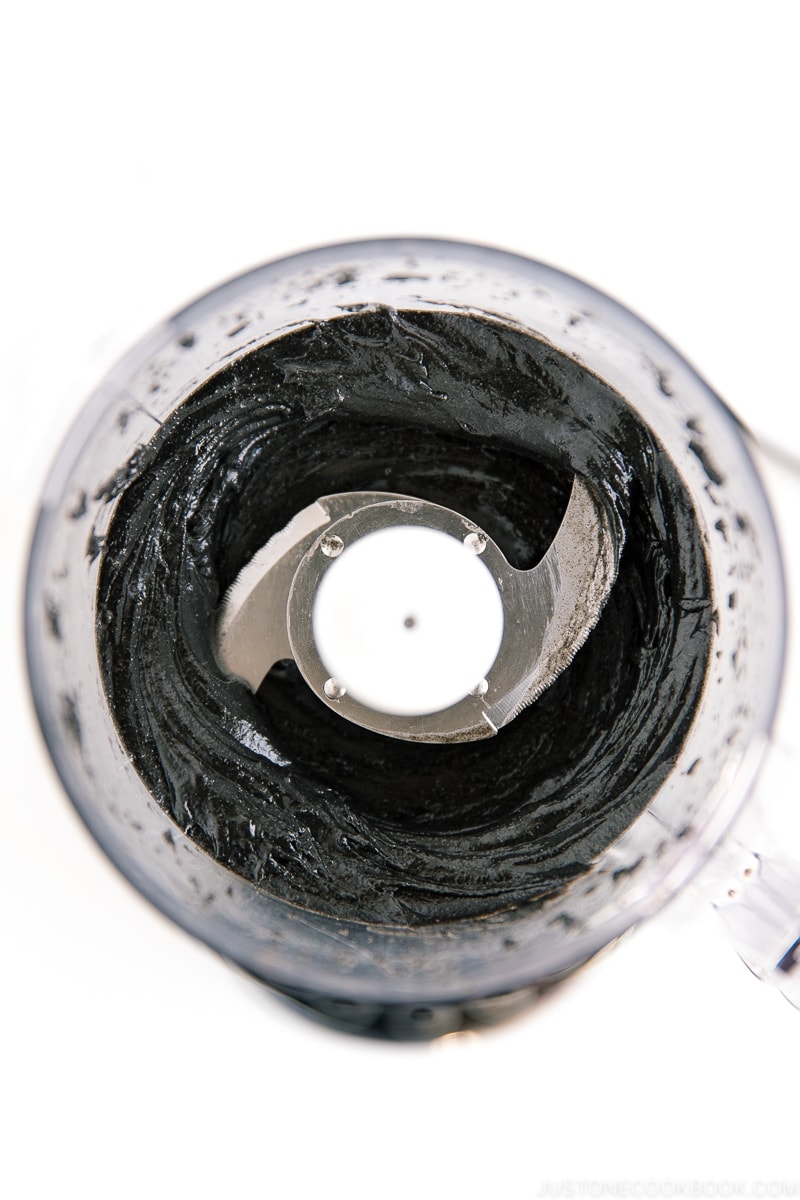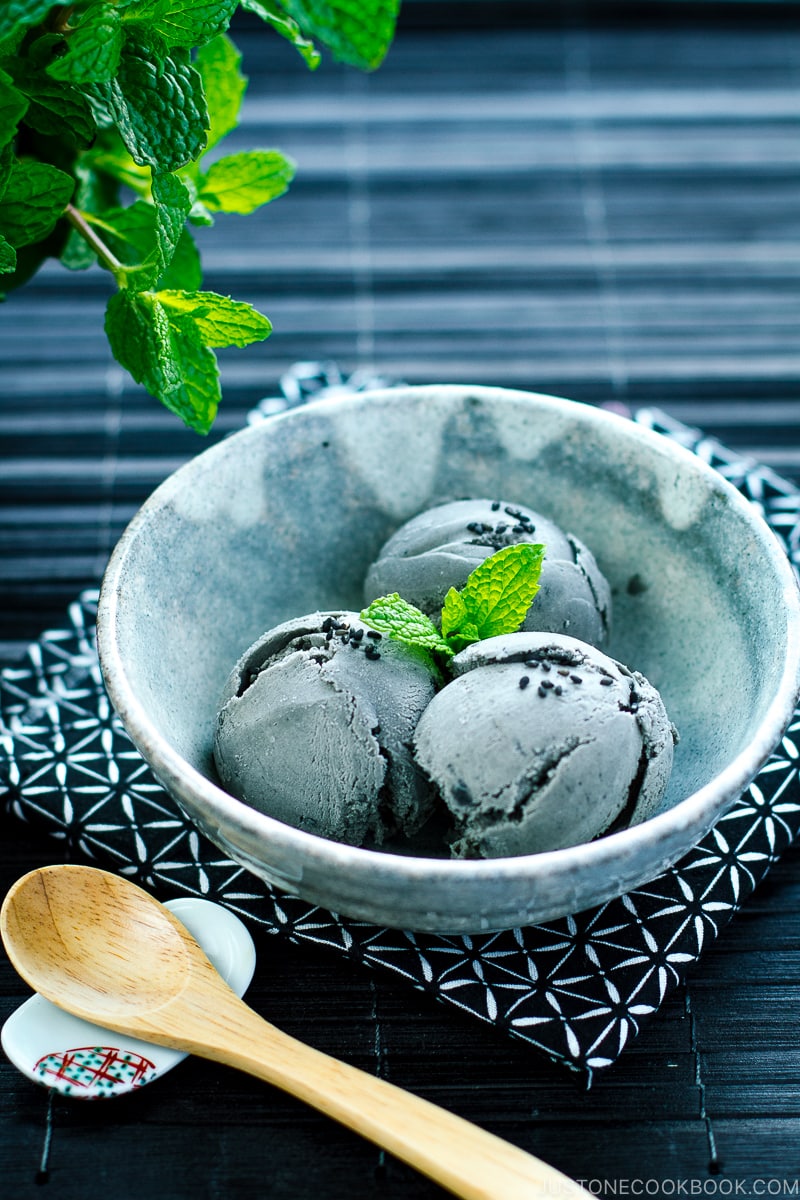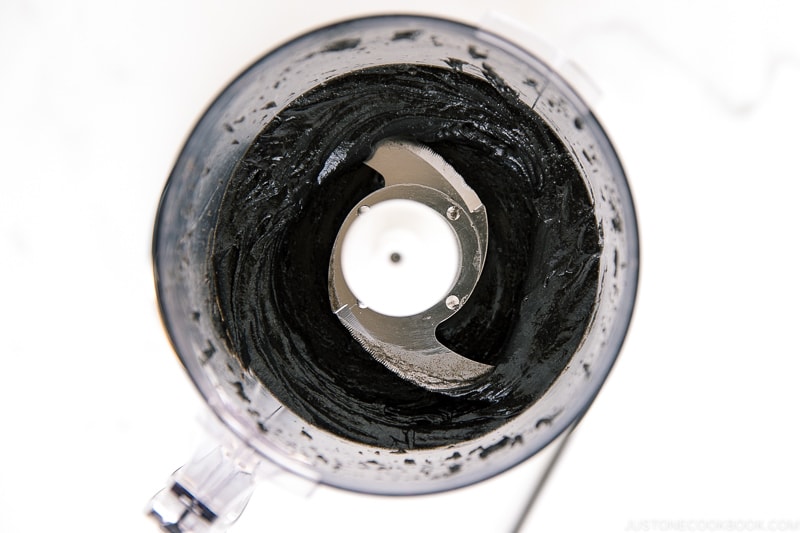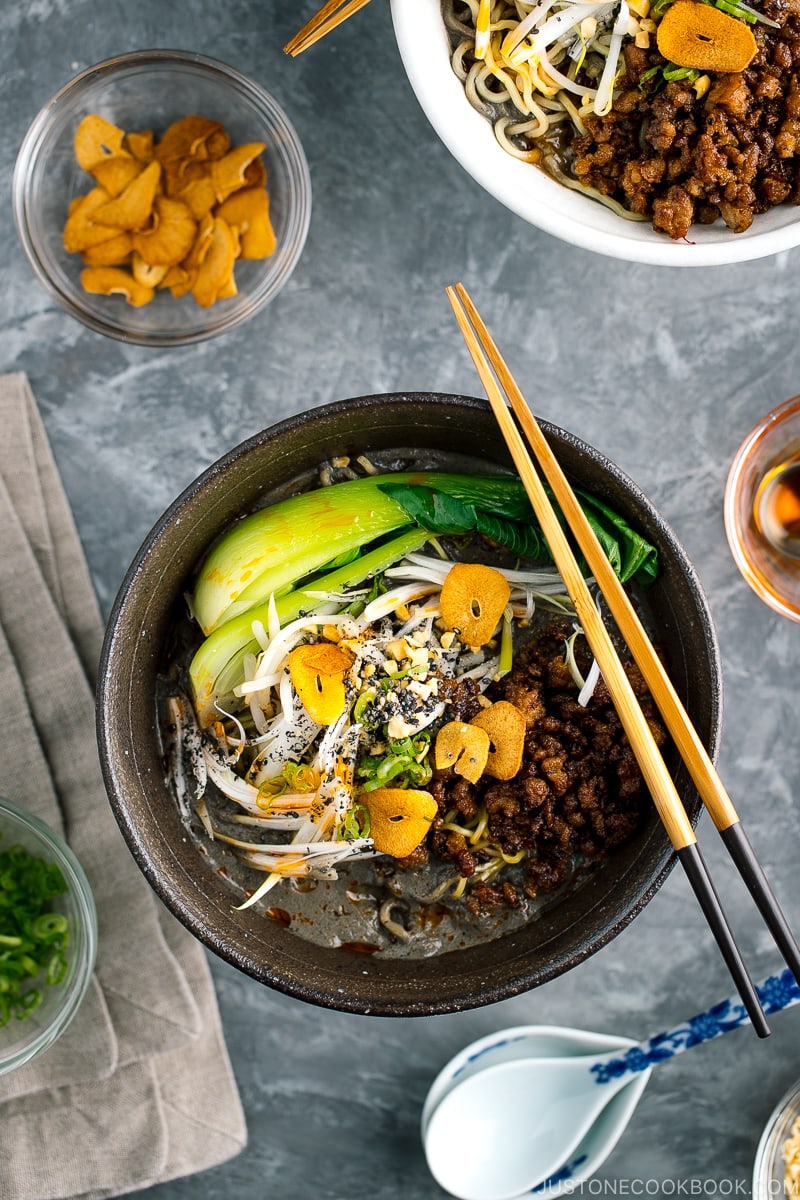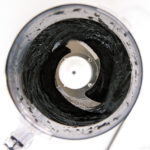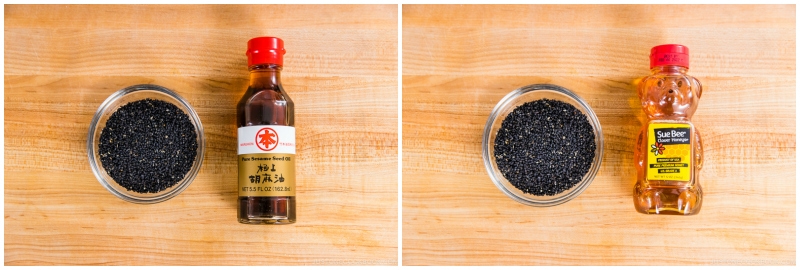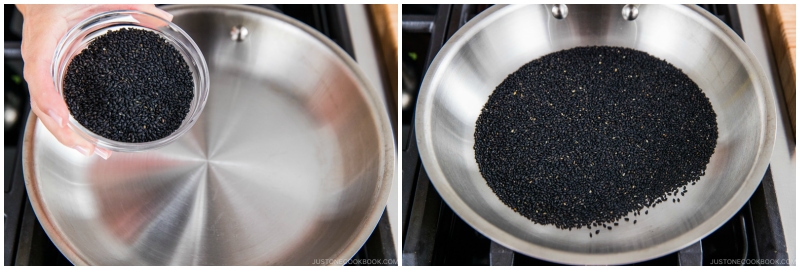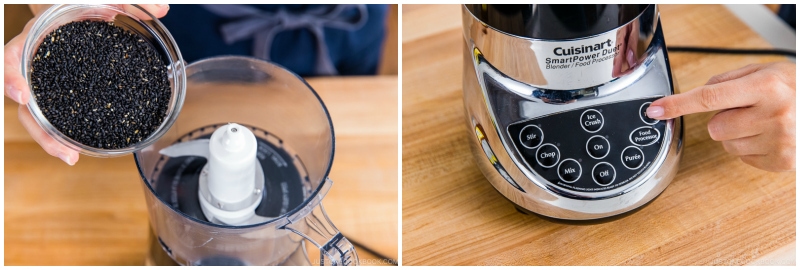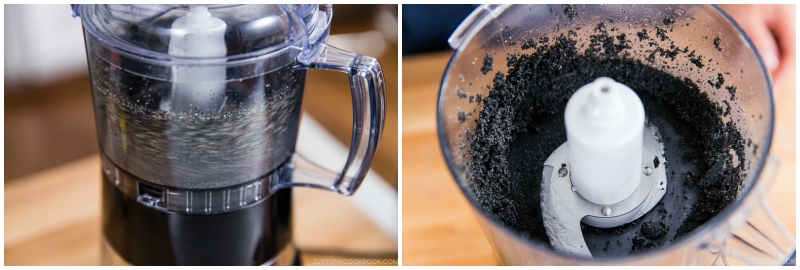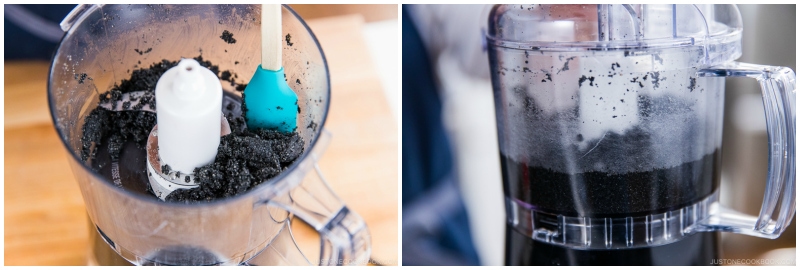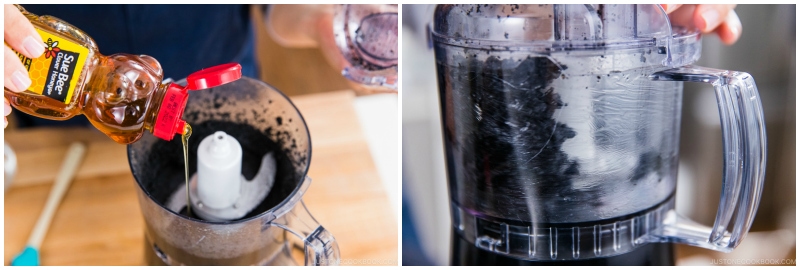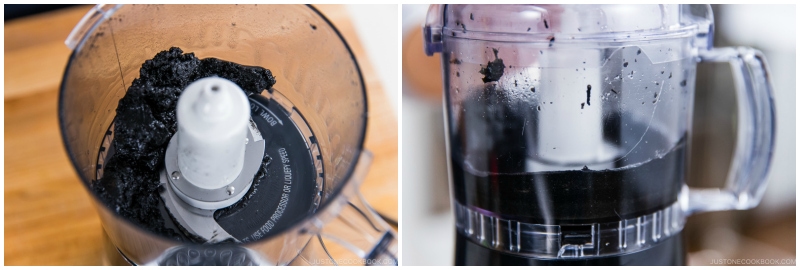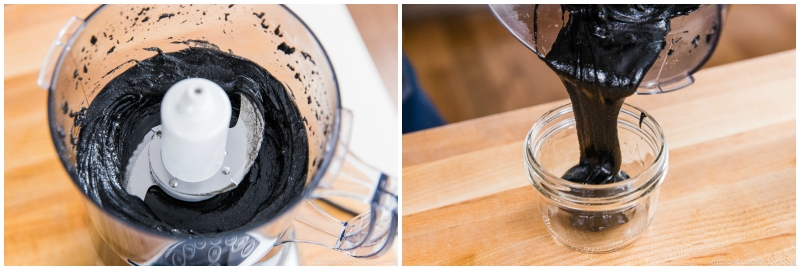In Japan and other East Asian and Southeast Asian cuisines, black sesame seeds are used extensively in cooking, baking, and desserts. Whether making savory or sweet dishes, we use the black sesame seeds either whole or in powder and paste forms. Black sesame is one of my favorite flavorings for pastries and sweets! When summer comes around, I make a jar of homemade black sesame paste (kuro neri goma) and store it in the fridge so I can always whip up black sesame ice cream and other treats. It’s also delicious to add to savory foods like black sesame dan dan noodles. Let me show you my simple method for how to make black sesame paste from scratch with both savory and sweet options included.
What Is Black Sesame Paste?
To make black sesame paste, unhulled sesame seeds are first toasted and later ground into a thick puree. Then, we add either honey to sweeten it or sesame oil to take it in the savory direction. With a glossy, jet-black color and uniquely rich nutty flavor, black sesame paste can change the dynamic of a dessert completely. I would also describe the taste as slightly earthy with a mildly bitter undertone, which provides a nice counterbalance to any sweets. You can find many popular Japanese sweets and pastries such as macarons, purin (Japanese pudding), chiffon cake, mochi, bread, and black sesame ice cream.
2 Simple Ingredients You’ll Need
It’s so easy to make homemade black sesame paste! You’ll need only:
black sesame seeds honey (for a sweet paste) or sesame oil (for a savory paste)
How To Make Black Sesame Paste
You can make this recipe in a total time of 10 minutes. Once you make the paste, you can store it in the refrigerator for up to 1 month!
Recipes Ideas for Black Sesame Paste
Try this paste in black sesame ice cream and black sesame dan dan noodles. You can also use black sesame paste to make a filling for mochi; add to your smoothie; make creme brulee, custard, and pudding; or add to a dipping sauce for fruit like banana and apples. Black sesame paste is gluten-free and known to be an excellent source of calcium, magnesium, iron, and healthy fat, so that’s a double win! Wish to learn more about Japanese cooking? Sign up for our free newsletter to receive cooking tips & recipe updates! And stay in touch with me on Facebook, Pinterest, YouTube, and Instagram.
